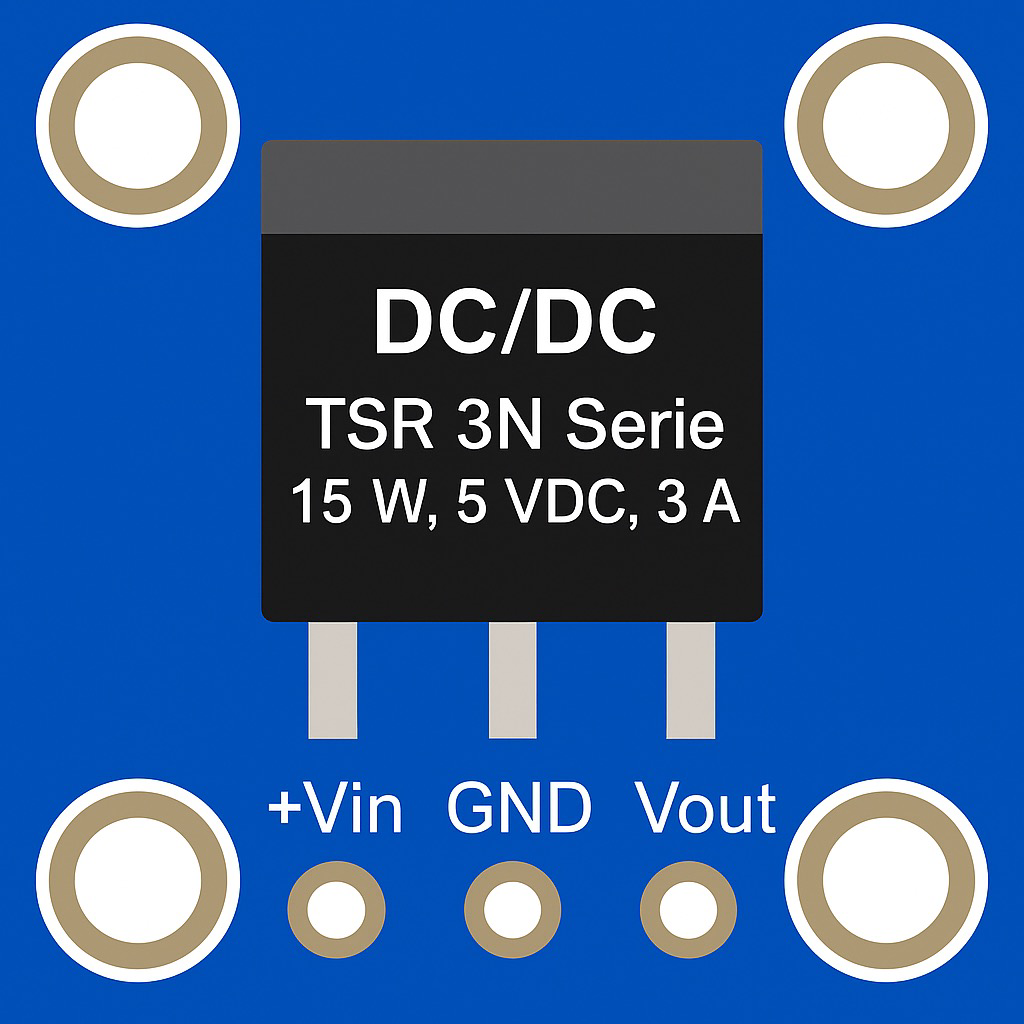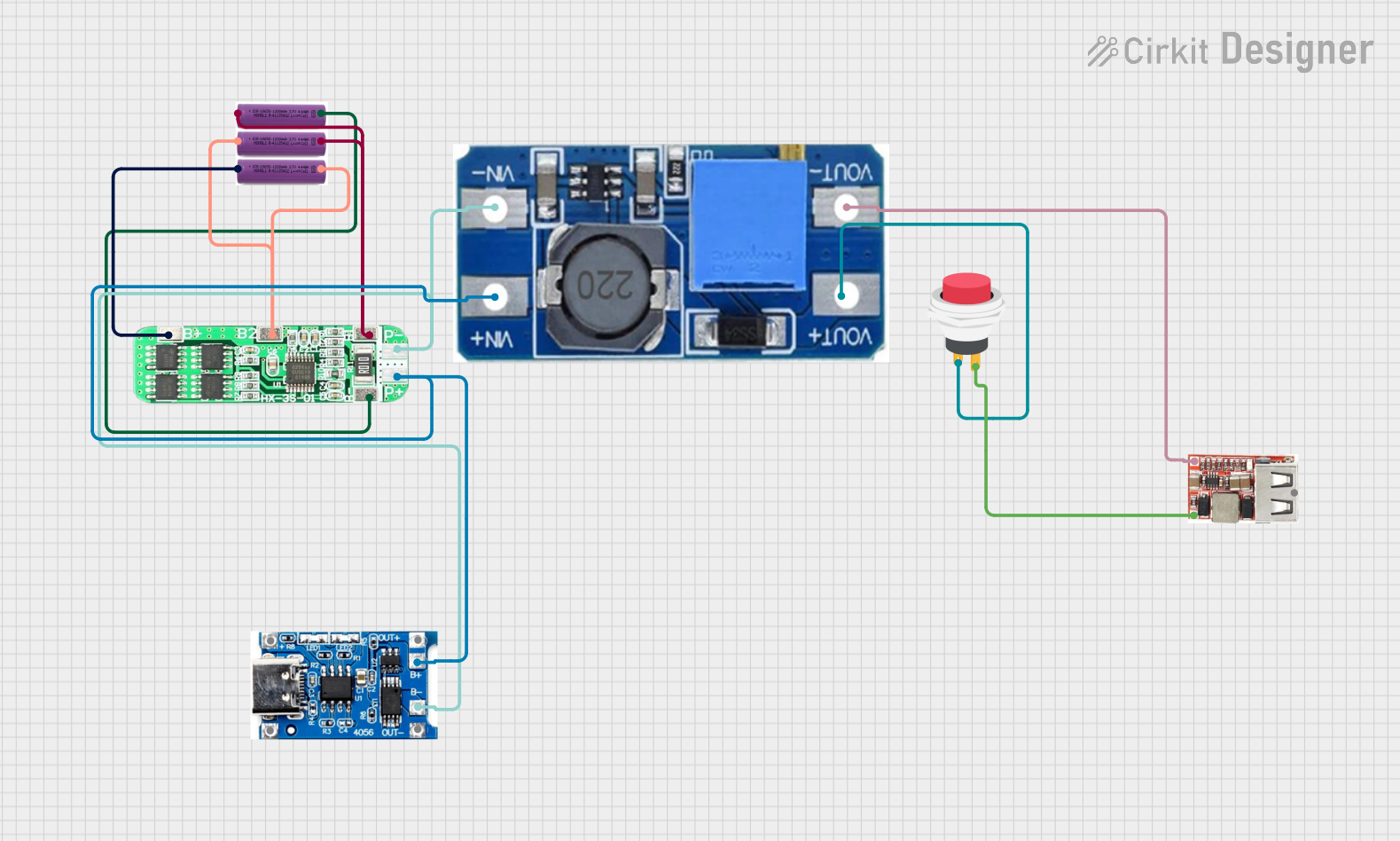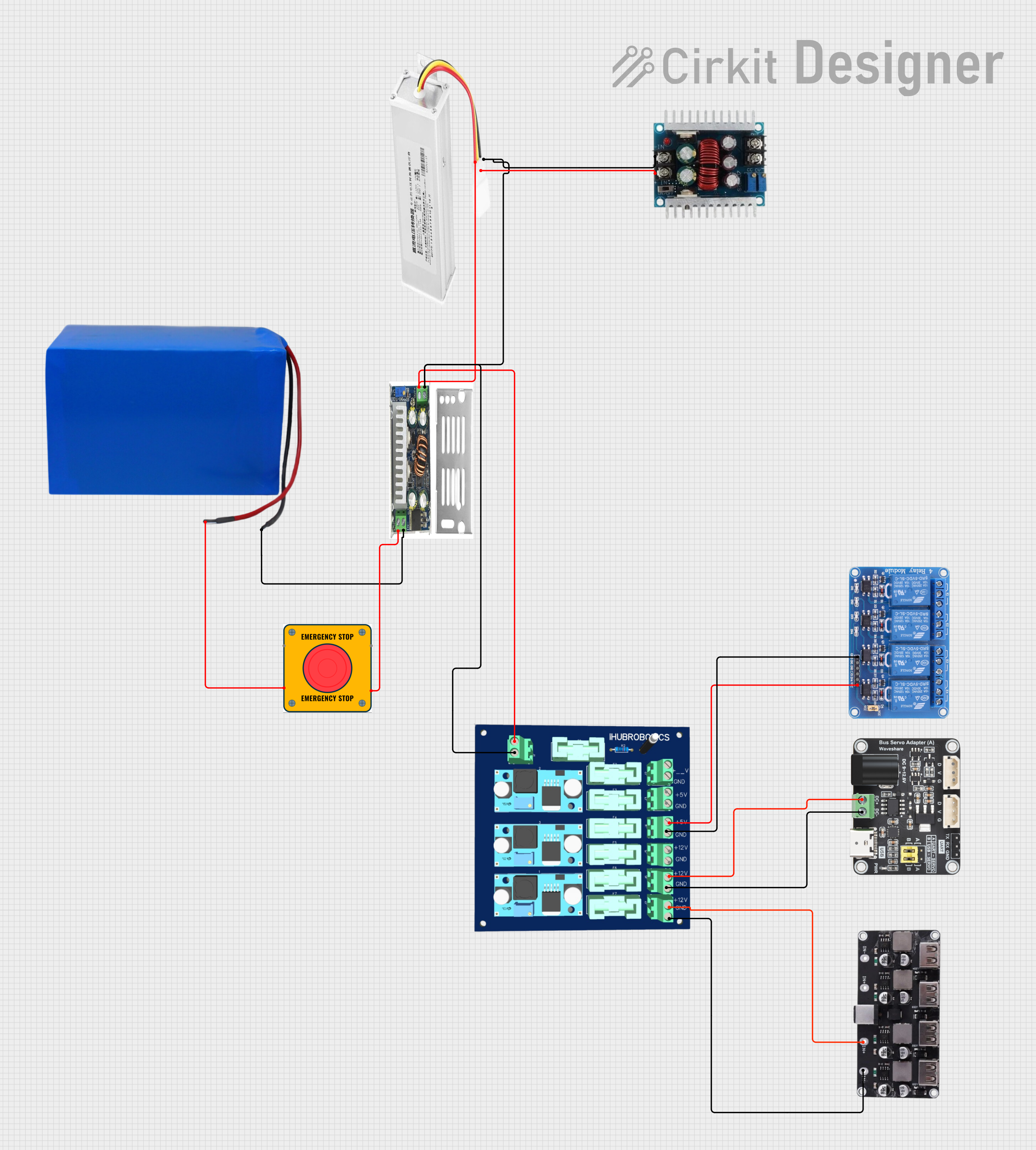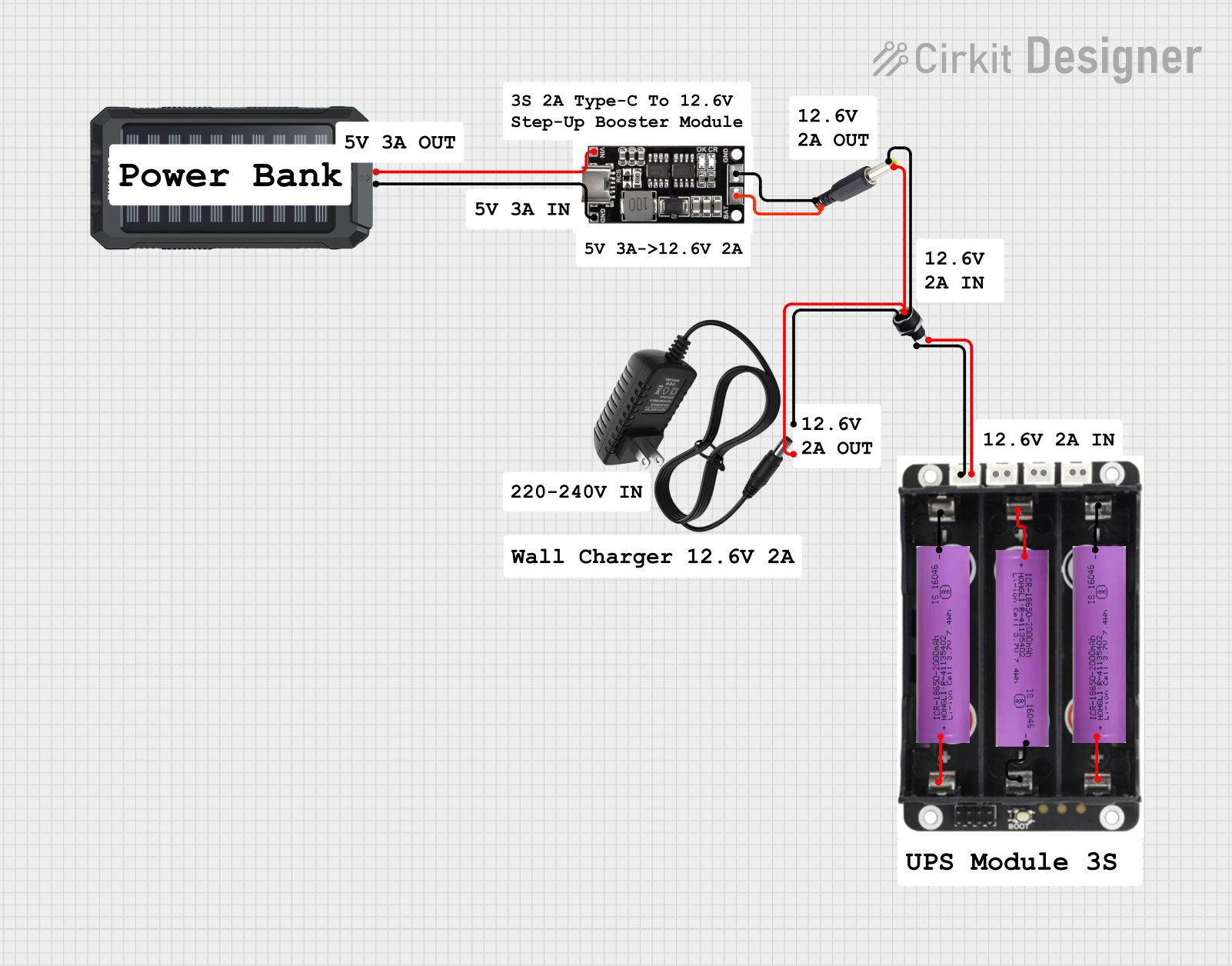
How to Use DC/DC TSR 3N Serie 15 W, 5 VDC, 3A: Examples, Pinouts, and Specs

 Design with DC/DC TSR 3N Serie 15 W, 5 VDC, 3A in Cirkit Designer
Design with DC/DC TSR 3N Serie 15 W, 5 VDC, 3A in Cirkit DesignerIntroduction
The DC/DC TSR 3N Serie 15 W, 5 VDC, 3A is a compact, high-efficiency DC-DC converter manufactured by Traco. It is designed to provide a regulated 5 VDC output with a maximum current of 3A, making it ideal for powering a wide range of electronic devices. This component is a drop-in replacement for traditional linear regulators, offering improved efficiency and reduced heat dissipation.
Explore Projects Built with DC/DC TSR 3N Serie 15 W, 5 VDC, 3A

 Open Project in Cirkit Designer
Open Project in Cirkit Designer
 Open Project in Cirkit Designer
Open Project in Cirkit Designer
 Open Project in Cirkit Designer
Open Project in Cirkit Designer
 Open Project in Cirkit Designer
Open Project in Cirkit DesignerExplore Projects Built with DC/DC TSR 3N Serie 15 W, 5 VDC, 3A

 Open Project in Cirkit Designer
Open Project in Cirkit Designer
 Open Project in Cirkit Designer
Open Project in Cirkit Designer
 Open Project in Cirkit Designer
Open Project in Cirkit Designer
 Open Project in Cirkit Designer
Open Project in Cirkit DesignerCommon Applications and Use Cases
- Powering microcontrollers, sensors, and other low-voltage devices
- Replacing linear voltage regulators in circuits to improve efficiency
- Battery-powered applications where energy efficiency is critical
- Industrial automation and control systems
- Consumer electronics and portable devices
Technical Specifications
The following table outlines the key technical details of the TSR 3N Serie:
| Parameter | Value |
|---|---|
| Input Voltage Range | 6.5 VDC to 36 VDC |
| Output Voltage | 5 VDC |
| Maximum Output Current | 3A |
| Output Power | 15 W |
| Efficiency | Up to 96% |
| Operating Temperature | -40°C to +85°C |
| Package Type | SIP-3 (Single Inline Package) |
| Dimensions | 11.5 x 8.5 x 17.5 mm |
| Weight | 4.5 g |
Pin Configuration and Descriptions
The TSR 3N Serie features a simple 3-pin configuration, as shown below:
| Pin Number | Pin Name | Description |
|---|---|---|
| 1 | Input (VIN) | Connect to the positive input voltage. |
| 2 | Ground (GND) | Connect to the circuit ground. |
| 3 | Output (VOUT) | Provides the regulated 5 VDC output. |
Usage Instructions
How to Use the Component in a Circuit
- Input Voltage Connection: Connect the input voltage (6.5 VDC to 36 VDC) to the
VINpin. Ensure the input voltage is within the specified range to avoid damage to the component. - Ground Connection: Connect the
GNDpin to the circuit ground. - Output Voltage Connection: Connect the
VOUTpin to the load that requires a regulated 5 VDC supply. - Bypass Capacitors: For optimal performance, place a low-ESR capacitor (e.g., 10 µF) across the input and output pins to reduce noise and improve stability.
Important Considerations and Best Practices
- Thermal Management: Although the TSR 3N Serie is highly efficient, ensure adequate ventilation or heat dissipation in high-current applications.
- Input Voltage Range: Always verify that the input voltage remains within the specified range (6.5 VDC to 36 VDC).
- Load Requirements: Ensure the connected load does not exceed the maximum output current of 3A.
- Polarity Protection: Use a diode or other protection mechanism to prevent damage from reverse polarity connections.
Example: Using with an Arduino UNO
The TSR 3N Serie can be used to power an Arduino UNO by providing a stable 5 VDC supply. Below is an example circuit and code:
Circuit Connection
- Connect the
VINpin of the TSR 3N to a 12 VDC power source. - Connect the
GNDpin of the TSR 3N to the ground of the power source and the Arduino UNO. - Connect the
VOUTpin of the TSR 3N to the 5V pin of the Arduino UNO.
Arduino Code Example
// Example code to blink an LED using Arduino UNO powered by TSR 3N
// Ensure the TSR 3N provides a stable 5V supply to the Arduino UNO.
const int ledPin = 13; // Built-in LED pin on Arduino UNO
void setup() {
pinMode(ledPin, OUTPUT); // Set the LED pin as an output
}
void loop() {
digitalWrite(ledPin, HIGH); // Turn the LED on
delay(1000); // Wait for 1 second
digitalWrite(ledPin, LOW); // Turn the LED off
delay(1000); // Wait for 1 second
}
Troubleshooting and FAQs
Common Issues and Solutions
No Output Voltage:
- Verify that the input voltage is within the specified range (6.5 VDC to 36 VDC).
- Check for proper connections to the
VIN,GND, andVOUTpins. - Ensure the load does not exceed the maximum output current of 3A.
Overheating:
- Ensure adequate ventilation or heat dissipation in the circuit.
- Check for excessive load current or input voltage near the upper limit.
Output Voltage Instability:
- Add low-ESR capacitors (e.g., 10 µF) across the input and output pins.
- Verify that the input voltage is stable and free from significant noise.
FAQs
Q: Can the TSR 3N Serie be used with a battery as the input source?
A: Yes, the TSR 3N Serie can be powered by a battery, provided the battery voltage is within the input range of 6.5 VDC to 36 VDC.
Q: Is the TSR 3N Serie protected against reverse polarity?
A: No, the TSR 3N Serie does not have built-in reverse polarity protection. It is recommended to use an external diode for protection.
Q: Can I use the TSR 3N Serie to power multiple devices simultaneously?
A: Yes, as long as the total current draw of all devices does not exceed 3A.
Q: Does the TSR 3N Serie require a heatsink?
A: In most cases, a heatsink is not required due to its high efficiency. However, in high-current applications, ensure proper ventilation to prevent overheating.